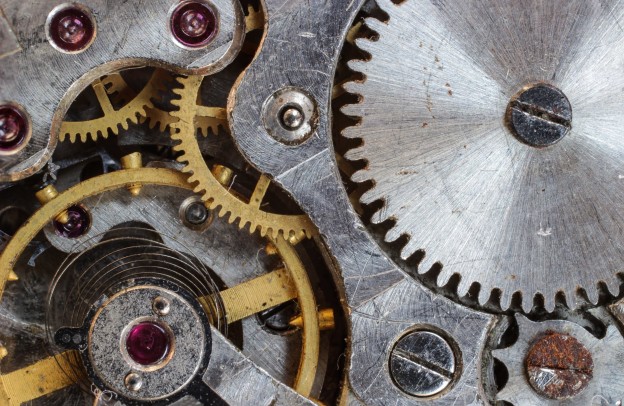
What Car Parts Should You Check Regularly?
Well, to increase the life and performance of your vehicle, here is a list of items you should inspect per the time and season. Some vehicle parts are required to be checked regularly while some other parts are to be inspected in the long run. Nonetheless, adhere to your vehicle’s original maintenance schedule and service interval record.
Short-Term Vehicle Inspection
Oil & Coolant Levels
Every month or every few fuel fill-ups and particularly before any long road trips, it’s prudent to get beneath your car’s hood and check both the oil and coolant levels when the engine is cool. If left unchecked, low levels of either can lead to engine issues. To locate both on your vehicle, refer to your owner’s manual.
Oil & Filter
The motor oil in your car’s engine provides a good deal of functions including:
- Cools the engine,
- Act as a sealant against the rubble,
- Averts engine corrosion,
- Lubricates the moving parts
- And lowers deterioration.
For excellent engine health, keeping it clean is important. Modern vehicles’ owner manuals will recommend changing your car’s oil every 10,000 kilometres, or six or twelve months – whichever comes first; however, it depends on your vehicle’s make and model. Check your vehicle’s owner manual and take the advice of an expert mechanic to ensure what is right for your vehicle.
Air Filter
Well, your engine’s air filter regulates the air that flows into your car’s engine and aid keeping debris and particulate out. By ensuring your air filter is flowing appropriately, you can enhance your fuel efficiency, lower emissions and improve your car engine’s life. You can perform this check at your home – first, check your owner’s manual for instructions and how often it requires to be changed.
Tyre Pressure/ Tread Depth
Properly maintained tyres are vital to a safe, fuel-efficient ride. Often check your tyres – ideally, you should check the pressure in your tyres every month, as well as, before long trips or transporting extra load and don’t ignore the spare tyre. Refer your owner’s manual for the right air pressure information that your tyres need. Besides, you can inspect your tyre’s tread depth with a simple penny method.
Rotate Tyres
The tread wear pattern on your tyres may differ between the front and back tyres, or even from one side of the tread to the other depending on your vehicle alignment, use and many other elements. Rotating your tyres will assist to lengthen the service life of your tyres by more evenly balancing the tread wear and aiding to avert noise and vibration issues.
Headlights, Turn Signals, Parking & Brake Lights
It’s paramount that the lights on your vehicle are appropriately working, but often these things can be easily ignored. Once in a month, when you’re parked in front of a flat surface, turn ON your headlights and inspect whether both headlights are properly functioning and positioned correctly. Inspect both turn signals and your parking lights by walking around your car. Have your friend or spouse or a family member stand behind the car while you apply the brakes to ensure that your brake lights are working properly.
Wax Your Vehicle
Remember to wax your vehicle at least once in six months after washing. It will keep your car shiny and assist keeping the paint in good condition and lower the likelihood of rust formation. Irritants like sand, dust and salt can build up and environmental elements like ozone and ultraviolet light can inflict microscopic harm; however, waxing can assist lower this by creating a shielding seal to extend your vehicle’s paint life.
Long-Term Vehicle Inspection
Spark Plugs
The spark plugs in your vehicle’s engine trigger the gas and air mixture that eventually powers your vehicle. If your spark plugs aren’t working appropriately then your vehicle’s engine will lose power and won’t run at the best capacity. Have an expert auto mechanic inspect and change any faulty spark plugs as per vehicle’s recommendations or when you feel a drop off in your engine’s power.
Check Shocks & Struts
The shocks and struts on your car work to control the impact and bounce back as your vehicle move over bumps in the road – they are an important part of your vehicle’s steering system. They should be checked by an expert auto mechanic every 70,000 kilometres. Alternatively, if you detect a drop in smoothness or inadequate control when driving, take your car to the workshop without further delay.
Serpentine Belt
Your vehicle’s serpentine belt is important to keep your car running by powering peripheral devices like your vehicle’s power steering pump, alternator and air conditioner compressor. Check the belt to make sure that it’s free of any cracks or other forms of deterioration. If damaged, change as per your vehicle manufacturer’s recommendation.
Transmission Fluid
Transmission fluid pretty much like your engine oil is a lubricant that assists keeping all of the moving parts inside of your transmission working appropriately. You must have your transmission fluid inspected and changed when required to avert expensive transmission damage or replacement. Follow the vehicle maker’s recommendations.
Transfer Case Fluid
In all-wheel or 4-wheel drive, the transfer case moves power from the transmission to the axles. You’ll require having the transfer case fluid inspected as per vehicle maker’s recommendations to make sure that it is appropriately filled and free from the leak. It is recommended to take the help of an expert auto mechanic as he has to get under the vehicle to inspect it and do the needful.
Coolant Fluid Exchange
The car’s radiator is an important part that aids in keeping your engine cool and working appropriately. Having your coolant system flushed regularly will assist removing contaminants that can form inside and make sure that your radiator is filled to an appropriate level. Inspect your vehicle maker’s recommendation to know how often your car’s coolant should be exchanged.
Front and/ or Rear Differential
The differentials are devices that divide the torque or power from the engine and facilitate it to transmit power to the tyres. In rear or front-wheel drive vehicles, there is only one differential, but all-wheel-drive or 4-wheel drive vehicles, both front and rear differential are there and perhaps even a centre differential. Similar to other parts of your vehicle, the differentials need to be kept lubricated to make sure appropriate functionality. Get an expert to check and replace fluid as per your vehicle manufacturer’s recommendation.
Apart from short and long-term vehicle inspection, you also need to conduct seasonal check-ups. That’s because your vehicle’s needs tend to differ by season and driving conditions.
Here are some handy recommendations that you can add to your vehicle maintenance checklist as part of your seasonal vehicle check-ups:
Check Battery’s Performance
Car’s battery is a very important part that keeps your vehicle running smoothly. A car’s battery supplies a substantial quantity of electrical current for the starter, engine and other electronic parts in the vehicle. Severe temperatures impact the performance of the vehicle’s battery, so regular battery testing will make sure that the battery will operate when you want it to.
Changing Windshield Wipers
Windshield wipers need to be replaced about once every year or whenever you feel the effectiveness is compromised. Besides, it could be an excellent idea to install winter wiper blades for the best performance especially, in winter months.
Final Words
Adhering to a car maintenance schedule and maintaining proper records of what you’ve done, can not only help prolong your vehicle’s life but also shield you against costly repairs, breakdowns or other surprises.
When you require quality used car spare parts at cheap prices, contact a reputed auto parts wrecker near you who will not only supply you with quality used auto parts at inexpensive rates but also will fit them into your vehicle. Moreover, auto wrecker’s used auto parts also come with a warranty for peace of mind.
















